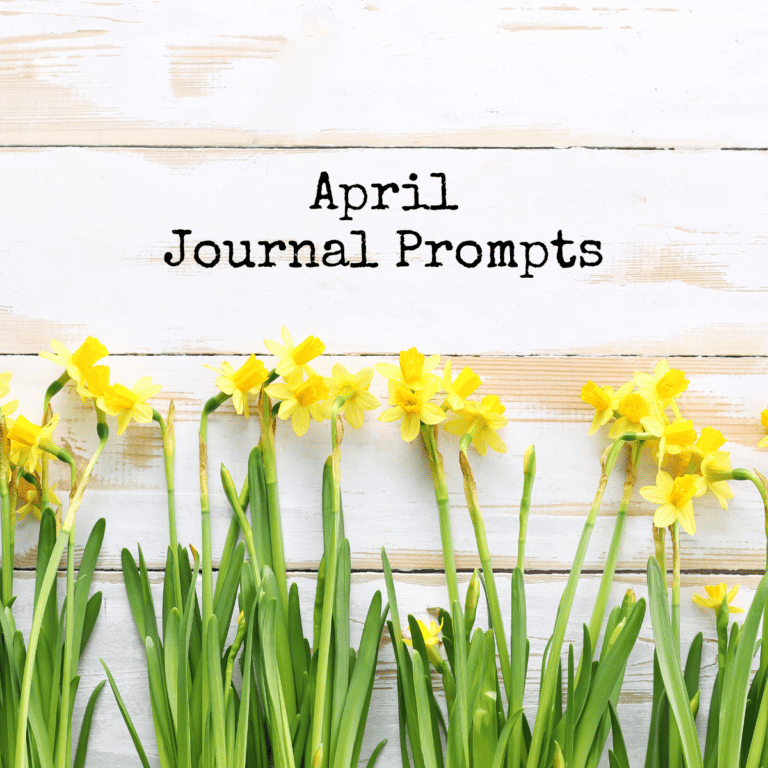40 Journal Prompts For Healing (+Why They Can Help)
The journey towards healing, whether emotional, psychological, or spiritual, is deeply personal and unique.
One invaluable tool that has withstood the test of time in aiding this journey, is journaling.
By putting our thoughts and feelings into words, we are able to start processing complex emotions, gain insight into our innermost thoughts, and build a deeper connection with ourselves.
Journaling not only provides a safe outlet for expressing feelings but also offers numerous benefits such as:
- Emotional Release: Through the act of writing, pent-up emotions can find an outlet, reducing the weight of emotional burdens.
- Clarity of Thought: Articulating feelings on paper can offer clarity to confusing situations or emotions.
- Enhanced Self-Awareness: By reflecting on one’s thoughts and feelings, individuals can develop a deeper understanding of themselves.
- Stress Reduction: The act of writing itself can be therapeutic, serving as a form of meditation and relaxation.
Journal Prompts For Healing
For those embarking on a journey of healing and self-discovery, journal prompts can be a valuable guide.
Here are 40 journal prompts designed to encourage healing, each paired with a brief explanation of its purpose:
- What are three things you’re grateful for today? Gratitude can shift focus from pain to positivity, fostering a healing environment.
- Describe a moment when you felt most alive. Recollecting joyous moments can reignite feelings of hope and happiness.
- What does self-love mean to you? Defining self-love paves the way for practicing it.
- Write a letter to your younger self. Reconnecting with your past can offer insights and resolutions.
- What are the barriers preventing your healing? Identifying obstacles is the first step to overcoming them.
- What does healing look like to you? Envisioning a healed state can provide a roadmap to achieve it.
- List the people who lift you up. Recognizing your support system reinforces the idea that you are not alone.
- Describe a time you overcame adversity. Recalling past successes can bolster current resilience.
- What are your core values? Aligning with core values can guide decisions and actions towards healing.
- How can you show yourself compassion today? Prioritizing self-compassion speeds up the healing process.
- What emotions do you find hardest to express? Acknowledging suppressed emotions can pave the way for their release.
- What self-care activities bring you peace? Promoting self-care habits can enhance mental well-being.
- Write about a time someone showed you kindness. Recalling acts of kindness can instill faith in humanity and relationships.
- What lessons have your past experiences taught you? Embracing past lessons can provide guidance for future endeavors.
- List things you’d like to say “no” to. Setting boundaries is essential for personal growth and healing.
- Describe your safe space. Visualizing a safe environment can provide mental refuge during tough times.
- What strengths have emerged from your struggles? Acknowledging growth can shift the perspective from victim to survivor.
- How has your pain shaped you? Recognizing the transformative power of pain can lead to acceptance and growth.
- What positive affirmations can you tell yourself? Positive self-talk can uplift spirits and counter negative thoughts.
- Write a letter to your pain. Directly addressing pain can provide closure and a sense of control.
- Who in your life truly understands you? Recognizing allies can bolster feelings of connection and understanding.
- What are you holding onto that you need to release? Letting go of emotional baggage can lighten the healing journey.
- Describe a dream or goal that excites you. Future aspirations can serve as motivators during the healing process.
- What aspects of your life bring you the most joy? Focusing on sources of joy can balance out the weight of pain.
- How do you want to feel a year from now? Projecting future emotions can provide a healing target to aim for.
- What would you tell someone else going through what you are? Offering advice can provide clarity and perspective on one’s own situation.
- How can you challenge negative beliefs about yourself? Challenging limiting beliefs can open doors to self-growth.
- What are the silver linings of your challenges? Recognizing positives in adversity can reshape perceptions.
- Describe your ideal support system. Outlining supportive structures can guide in seeking or building them.
- What does forgiveness look like to you? Understanding forgiveness can be a pivotal step in achieving it.
- List things you’d like to discover about yourself. Self-exploration can unearth strengths and potential growth areas.
- What boundaries can you set for healthier relationships? Boundaries ensure self-preservation and mutual respect.
- How can you transform your pain into power? Transmutation can lead to empowerment and growth.
- What are the rituals that ground you? Grounding rituals provide stability during tumultuous times.
- Describe a memory where you felt at peace. Peaceful memories can serve as anchors during distress.
- How would you describe your healing journey in three words? Simplifying complex journeys can offer clarity and focus.
- What old wounds need your attention? Addressing old wounds can prevent them from festering.
- What activities or hobbies make you lose track of time? Engaging in flow activities can be therapeutic and healing.
- How can you be kinder to yourself? Practicing kindness towards oneself is central to healing.
- Write about a time you chose yourself. Celebrating acts of self-prioritization reinforces their importance in the healing journey.
As you explore these prompts, remember that healing is not a linear process, but a journey of self-discovery, acceptance, and growth.
Embrace the process and let your journal be your guide.
You may also like:





